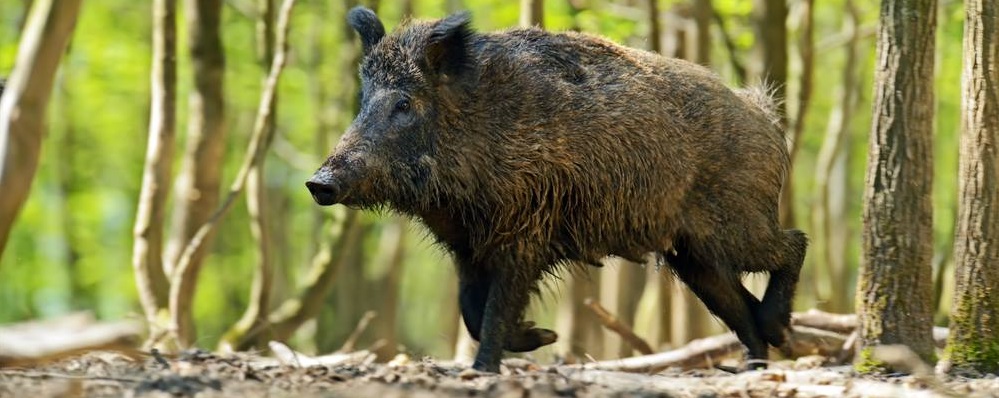
Wild Hog Tracks vs. Deer Tracks
Wild hog tracks and deer footprints are often mistaken for one another because both animals have hoofs and damage plants. Deer and pigs have two toes on each foot that leave narrow, oblong shapes in mud or dirt. A few factors provide the key to telling these two pests apart:
- Wild hog footprints have blunt toes and an overall rounded look.
- Deer tracks have pointed toes, and prints are often heart- or spade-shaped
- Feral pigs frequently leave behind mud and hair when rubbing against fences and trees.
What Wild Hog Tracks Reveal
Footprints not only indicate an infestation, but they can also help with control. Trails left behind by feral pigs give residents an idea of how many of the pests live nearby. Well-worn paths signal a favorite route. Overgrazed plants along these tracks may also point to large groups since wild hogs tend to destroy foliage.
Wildhog Damage
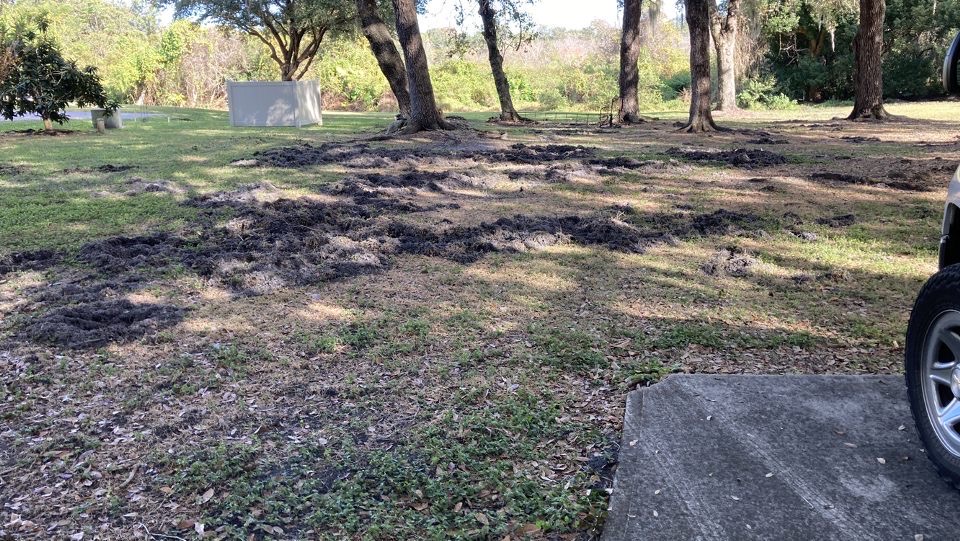
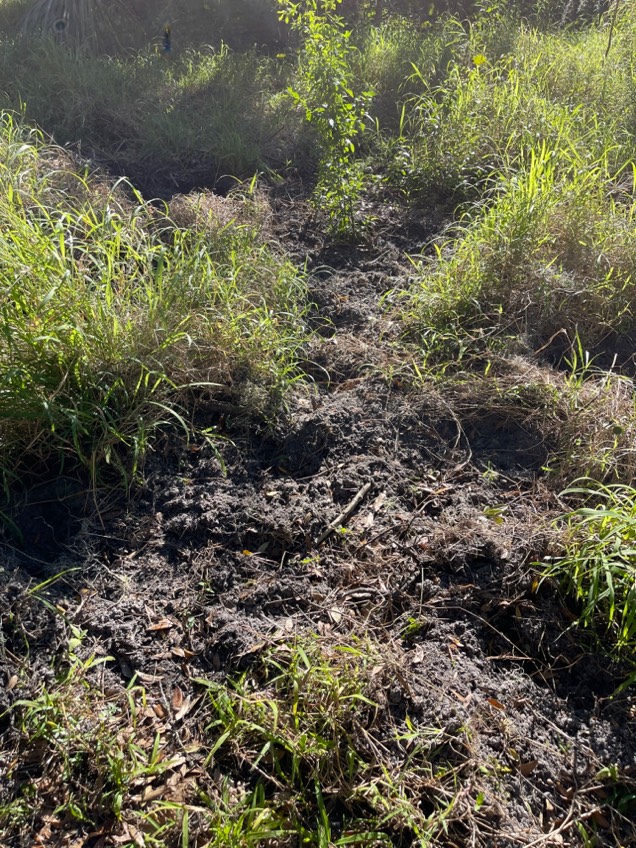
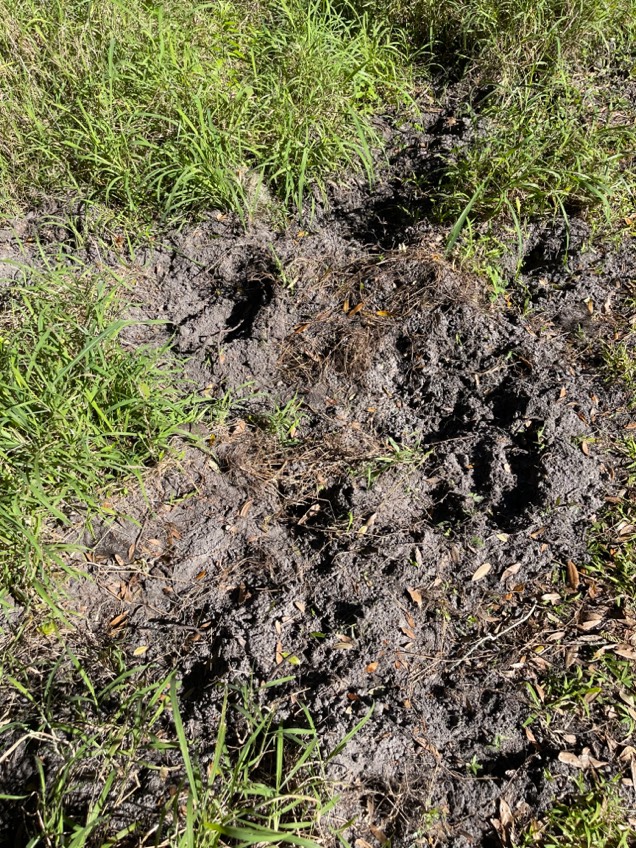
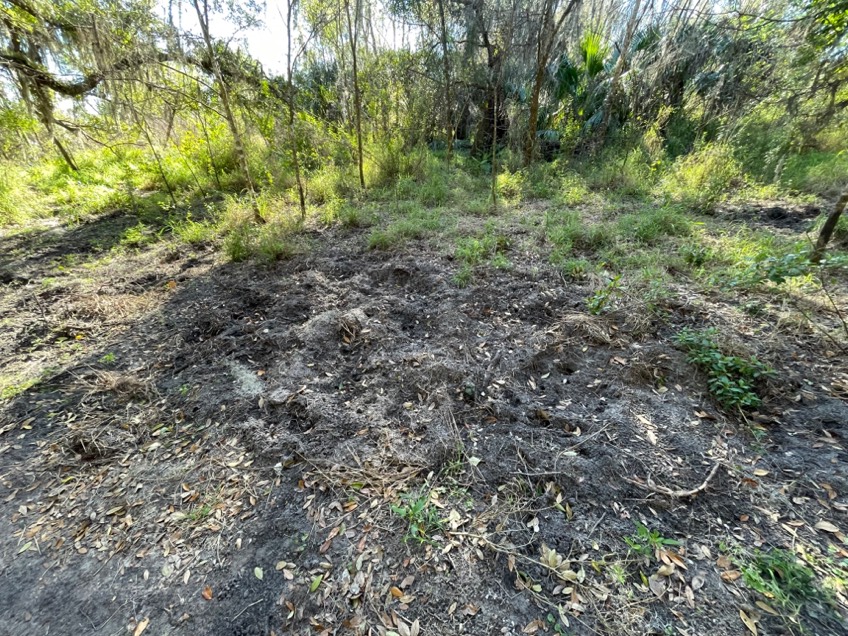
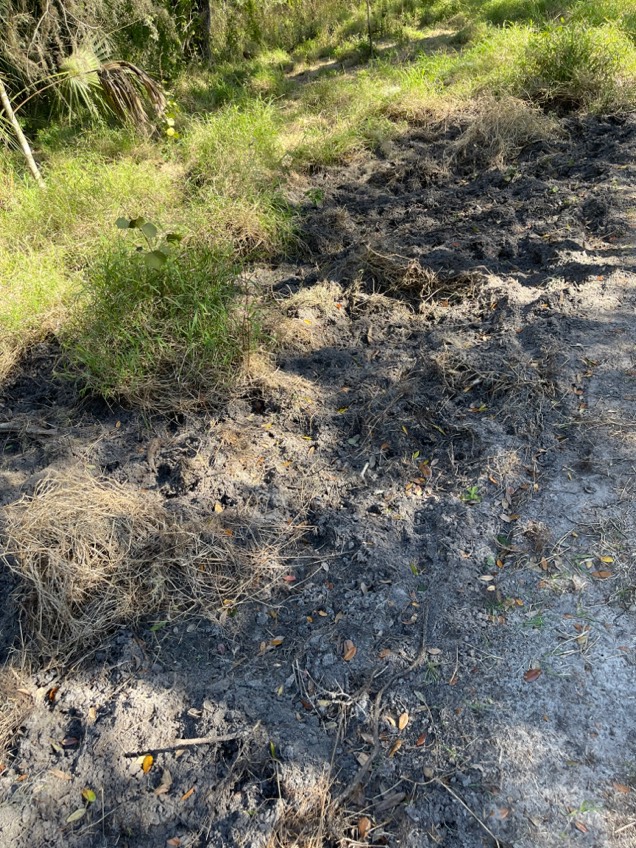
Where to Find Wild Hog Footprints
Feral pigs enjoy rolling in muddy patches of fields and yards to cool off on hot days. Because wet soil retains animal prints, this is a good place to look for tracks. Residents should also check around trees and fences, which the pests like to use as scratching posts, as well as near gardens and other food sources.
Wildhog Control
When these pests infest yards, they cause a great deal of lawn damage in the process. For people who keep livestock, the risk of disease transmission may be an even more serious concern. Residents who find wild hog tracks can contact a trained Critter Control technician for expert service and humane removal.